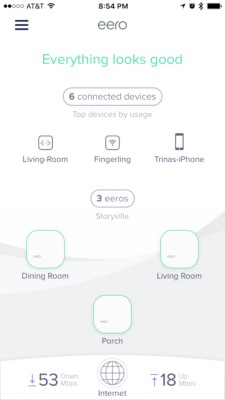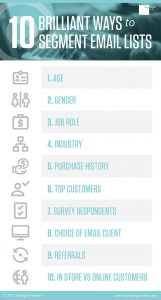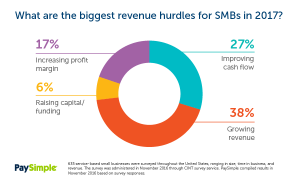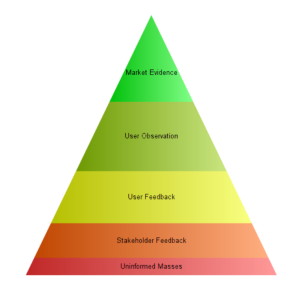Some of the best opportunities to improve customer experience lie in the space between well-defined product features. Contributor Brent Sleeper reveals what can be learned from one company’s successful example.

Championing the power of great customer experience (CX) to improve key benchmarks and business results is becoming a core part of how businesses operate today — and a differentiator for those businesses that do it well. That’s no article of faith; real data supports this premise: better experiences lead to better performance.
Like any strategic undertaking, improving how customers experience our products isn’t a single, big-bang event — in fact, it’s quite the opposite. CX is the sum of myriad small interactions, from first-touch onboarding to deceptively powerful notifications, that form a constant, and essential, process.
But the incremental nature of CX improvement also suggests why it’s sometimes easy to put it off for another day, especially when faced with immediate competing goals like speed to market or dealing with technical limitations. That challenge is compounded when CX responsibility falls between the bailiwicks of different teams, as it nearly always does.
The space between
That shared responsibility is why I often think of CX as the “dark matter” of successful products and services. Even though astrophysicists estimate that dark matter makes up something like 85 percent of the total mass of the universe, it can’t be directly observed; it can be detected only through its gravitational effects on the visible matter we do see.
Like dark matter, experience is difficult (if not impossible) to assess directly. CX can feel like an intangible something that exists between all the concrete features and discrete responsibilities that make up a typical product offering.
Maybe that seeming ineffability explains why CX can be so hard to get right — even though it’s as clear as day when it’s missing. I recently experienced an example that illustrates how effective focusing on the space between features can be.
Meshing form and function
WiFi wireless networks are ubiquitous and indispensable to our everyday experience. And in most regards, they simply work — that is, unless you’re the poor soul responsible for setting one up. Whether it’s navigating stone-age UIs or fussing with base station placement to get good coverage, configuring a network hasn’t often been something most of us love.
Coverage is a particular challenge I long faced in the San Francisco Edwardian flat in which I live — a long, skinny space made up of a series of rooms off a single hallway. So when I learned that a new generation of wireless “mesh” networking products from companies like Eero, Google, Netgear and AmpliFi employ multiple small transmitters with the ability to monitor usage and signals to optimize their coverage automatically, I was more than ready to give it a shot.
And so far, the performance of my new Eero network delivers just what I’d hoped: great coverage and speed in the various nooks and crannies of my flat. And even better, it didn’t require a lot of fussing with networking bands or channels or other technical configurations. (But I’m not here to sell you on mesh networking. Go check out any of these various competing products if you’re interested.)
From function to experience
What I am here to tell you is that this product actually was a delight to set up. As a marketing and customer experience champion, that caught my eye in a serious way. What did the company do to spark joy in what should by all rights be a mundane task?
In many ways, I was struck that there were several things along the way that were not part of the core product — but that were essential to my overall experience of it — that actually made the setup and configuration process a delight.
• First impressions. An Eero is a lovely piece of hardware that’s shipped in Apple-like packaging. Does it actually work better because it arrived in a carefully designed box or because the device itself has a pleasing form? No, of course not. But that “unboxing” impression matters when a user is developing her or his first emotional impressions — and it reinforces the notion that this is something different from a run-of-the-mill wireless router.
And there’s even a hidden functional benefit: A better-looking device is less likely to be hidden behind a closet door. Do you think the Eero team considered that a wireless router that’s placed out in the open actually will deliver better performance? You bet they did.

• Core product activation. Setup, or what a pure software business might call onboarding, is very carefully designed to reflect the core Eero brand promise. It’s clear the company put a lot of thought into not just the function, but also the experience of setting up its devices.
In fact, I would not be surprised if the company invested almost as much time and financial resources into designing its software and setup process as it did in solving some the actual rocket science of networking physics.

• Transition from channel to channel. I’m sure you’ve had the experience with some businesses of the right hand not knowing what the left is doing. Classically, the customer support call center won’t know much about your web-based help requests. Or perhaps the web marketing page and the in-app dashboard look like they were designed by competing factions.
Eero’s account confirmation emails, landing pages and in-app screens all feel like they were designed with a cohesive identity — and they don’t force me to engage in the effort of context-switching. It shouldn’t matter to me what channel or platform a particular message or screen represents — it’s all Eero, whatever the platform for the task at hand: marketing, configuration or support.

• Defining its offering as a single experience. Perhaps most telling of all is how Eero refers to its products and offerings. Whether it’s in the box or the app, there’s no Eero XVA5421 or Eero Wireless Router Pro Plus Ethernet and Toaster Oven. There’s just Eeros.
Sure, that’s easier to do when you’re a small company with just one (or perhaps two) offerings, but there’s a core lesson in this approach to branding: Products and plans are just artifacts of an overall brand experience. Either Eero delivers a great experience or it doesn’t.
Note that none of these qualities are actually necessary to how the Eero devices work. It’s very easy to imagine a utilitarian product manager who’s seeking to shave excess cost eliminating them all. So I think it’s telling that these “dark matter” CX qualities are what took my experience with my Eero out of the realm of everyday networking products and into another space altogether.
Feel the force of CX
To be sure, the “killer feature” of mesh networking — great coverage with minimum manual configuration — is key. After all, if the Eero (or any other competing product) didn’t deliver on that core promise, I would have been left disappointed and frustrated. Conversely, even a clunky approach to solving my networking challenge would have left me satisfied, if not euphoric.
But by doing all of these things — 1) addressing my core functional need and 2) focusing on the experience “between” core product features — Eero left me feeling not just satisfied, but delighted. And that’s a powerful emotional asset for any brand to leverage into increased engagement and growth.
Don’t let CX’s often intangible nature lead you to be fatalistic about your ability to shape it, or to abdicate ownership of it to teams with more direct implementation responsibilities. Indeed, paying attention to the space between the features we see makes all the difference between a great customer experience and a lackluster one. And recognizing the impact of that dark matter — and then acting upon it — is the mark of an empathetic and empowered CX leader.
Some opinions expressed in this article may be those of a guest author and not necessarily Marketing Land. Staff authors are listed here.
Marketing Land – Internet Marketing News, Strategies & Tips
(96)









